- And you, feed your child chips? Why doesn't he eat mashed potatoes ?!
Every day, parents who have chosen pedagogical feeding have to deal with tricky questions and deal with the errors of those around them. We have collected 8 of the most common misconceptions of other parents and prepared comments on them.
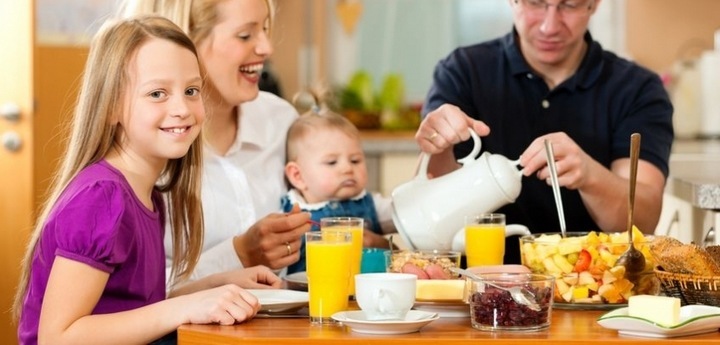
The method of pedagogical feeding allows you to easily and safely prepare your baby for regular adult food. Acquaintance with a new food begins with the fact that the baby is given the opportunity to try the products that her mother eats. In this case, parents take into account the nutritional interest of the child. Pedo-feed does not exclude breastfeeding and does not require compliance with a certain order and standards for the introduction of new products.
So, if you have already started or are going to start pedagogical feeding, get acquainted with the myths that you will have to face.
1. "The baby will certainly choke"
If you follow simple rules, this will not happen. Pedagogical feeding begins with microdoses. Mom additionally kneads a portion the size of a picture, so that the baby can safely get acquainted with new consistencies and tastes. The child learns to chew food, and the serving size can be gradually increased.
2. “You can give your baby any food, from any age”
You can start pedicure when the child can already sit with minimal adult support and confidently holds his head. This occurs in about 6 months. As a rule, by this time, the tongue ejection reflex in children is already dying away, and they are actively interested in food.
As for the set of products for pedagogue, common sense should be included here. Not all can be given to a child! Food that is likely to cause an allergic reaction is prohibited. These are honey, exotic seafood, cow's milk, peanut butter and others. You also need to exclude convenience foods, fast food, sweets and sauces.
It is strictly forbidden to give nuts and solid foods in small pieces to children under 2-3 years old.
3. “Pedicure is suitable exclusively for infants”
Such an opinion is erroneous. Pedo-feed can be successfully used on mixed or artificial feeding. It is necessary to take into account the fact that small portions of “adult” food will not replace breast milk or a mixture, which are the main diet of babies up to a year. You also don’t need to try to force-feed your child with dishes that he doesn’t like, but that you find useful. Kids should eat porridge, mashed potatoes and soups with pleasure.
4. "This type of complementary foods - for lazy mothers"
Like other components of raising a child, pedagogical feeding takes away a lot of strength and patience from mothers. It is unlikely that a lazy mother will maintain her iron endurance when she needs to take her child 4 to 5 times a day and patiently divide the food into tiny portions and give them to the baby. And after the meal you still have to clean up the table. In this case, the mother needs to have time to repel the attacks of grandmothers and other relatives who are sure that the baby should be fed more.
five.“With pediatric feeding, the child will not eat enough, as it should”
Breast milk or mixtures make up about 90% of a baby’s diet for up to a year and cover the need for vitamins and calories. As mothers gradually increase their doses of “adult” food, by the age of 12 months the portion of food for the child becomes larger compared to those that were at the very beginning of the pediatric feeding.
6. “You need to choose between mashed potatoes and complementary foods. You can’t interfere! ”
Moms manage to combine pedagogical feeding correctly with pediatric. At home, you can feed your child dishes from the common table, and for guests or on trips - ready meals.
The opinion that a certain type of digestion is formed in crumbs (“for mashed potatoes” or “for pieces”) is erroneous. In addition, on the common table, the baby will inevitably meet semi-liquid dishes - cream soups, yoghurts, mashed fruits.
7. “Only one new product per day can be given to a child for testing”
For each meal a day, a child can be given 3 new products to try. For example, at first the baby eats the microportion of potatoes, then the microportion of boiled chicken, and then the microdose of cheese. And parents should be prepared for the fact that the kids have their own taste preferences, which may differ from their own.
8. “Pedagogical feeding will lead to bad manners”
In fact, in the process of pedagogue, the child learns to behave properly at the table. He eats with all members of the family, tries use a spoon and a fork, gets used to a certain meal schedule. As soon as the child makes it clear that he is full, or begins to indulge, his parents let him out from the table.
And what other myths about pedagogy can you complement ours?
Dr. Komarovsky and the perinatal psychologist Ksenia Solovey will find out what pedagogical complementary foods are and what exactly it consists of, as well as name its pros and cons:

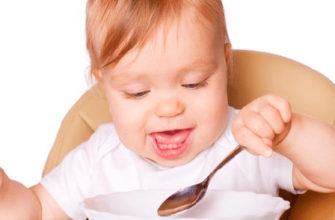

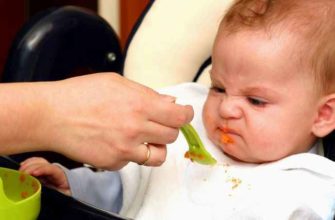
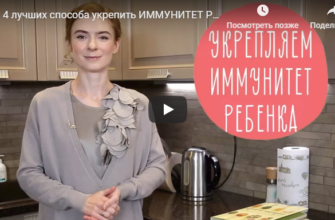
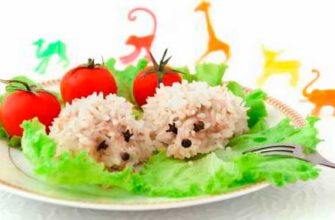


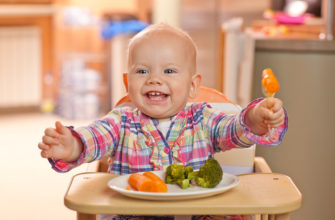
I would not see a rigid ideology in pedagogical feeding that must be blindly followed and aggressively defended from supporters of other views. If you think that your child should take this step on the path of growing up this way, then let him do it with your help. But you may well temporarily refuse to continue this practice, if he doesn’t greet him, you have guests, you are on his way.
Pedagogical feeding is an important part in shaping a healthy baby. This needs to be paid quite a bit of attention and taken very seriously. And for all myths, no matter how many they exist, you do not need to pay attention.
We gave a child from 4 months old various vegetable purees, apple juice. Of course, we had to lure the child a little so that his mouth would open and not spin. But with age it was easier to transfer to food that they themselves ate.
I noticed a punctuation mistake in the sentence with the phrase "at the same time", remove the comma there, please.
Moms and grandmothers were also involved in pedicure, there is nothing wrong with this if such an activity is carried out not without a mind. No need to throw huge chunks or something that he doesn’t like into the child’s mouth. No need to throw heavy food to the child. Before doing pedicure, you need to know about this well. It is better to take up the education of a child in childhood than to leave it for later. Do not be afraid, study the problem, begin to teach the child to eat something new, unusual, accustom him to such food. If you do not start in early childhood, then it will only get worse. Go for it, mommy and daddy
My child is now 1 year old. From 6 months I began to introduce complementary foods with purees, then gradually began to feed more solid foods. Everything was fine, now we are trying to switch to normal food for adults.
The hype with feeding the children does not need to be arranged, everything is strictly individual here. I began to feed the older adult food from 8 months to 10 months, and the youngest only after a year, because I was not ready for it!